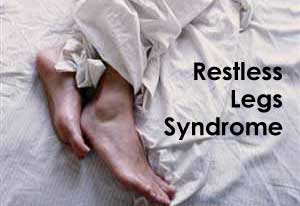- Home
- Editorial
- News
- Practice Guidelines
- Anesthesiology Guidelines
- Cancer Guidelines
- Cardiac Sciences Guidelines
- Critical Care Guidelines
- Dentistry Guidelines
- Dermatology Guidelines
- Diabetes and Endo Guidelines
- Diagnostics Guidelines
- ENT Guidelines
- Featured Practice Guidelines
- Gastroenterology Guidelines
- Geriatrics Guidelines
- Medicine Guidelines
- Nephrology Guidelines
- Neurosciences Guidelines
- Obs and Gynae Guidelines
- Ophthalmology Guidelines
- Orthopaedics Guidelines
- Paediatrics Guidelines
- Psychiatry Guidelines
- Pulmonology Guidelines
- Radiology Guidelines
- Surgery Guidelines
- Urology Guidelines
Major breakthrough in treatment of restless legs syndrome

In a major breakthrough, the researchers for the first time observed an increase in excitability of motor units in iRLS (idiopathic restless leg syndrome) which could enhance the likelihood of leg movements. The study was published in The Journal of Physiology.
Restless legs syndrome is a sensorimotor network disorder. So far, the responsible pathophysiological mechanisms are poorly understood.
Reflex studies indicate the involvement of spinal structures. Peripheral mechanisms have not been investigated so far. Restless legs patients complain about sensory and motor symptoms leading to sleep disturbances. Symptoms include painful sensations, urge to move and involuntary leg movements.
Read Also: Restless legs syndrome linked with risk for suicidal thoughts
The researchers provided the evidence that the excitability of peripheral motoneurons contributes to the pathophysiology of restless legs syndrome. Until now it was thought that RLS is caused by genetic, metabolic and central nervous system mechanisms. For the first time the researchers show that, in fact, it is not only the central nervous system but also the nerve cells targeting the muscles themselves that are responsible.
In vivo excitability studies on motor and sensory axons of the median nerve were performed on patients with idiopathic restless legs syndrome (iRLS) who were not currently on treatment. The iRLS patients had greater accommodation in the motor but not sensory axons to long‐lasting hyperpolarization than age‐matched healthy subjects, indicating greater inward rectification in iRLS.
According to the authors, HCN channels open at less hyperpolarized membrane potentials, a view supported by mathematical modelling. The half‐activation potential for HCN [hyperpolarization‐activated cyclic nucleotide‐gated] channels (Bq) was the single best parameter that accounted for the difference between normal controls and iRLS data. A 6‐mV depolarization of Bq reduced the discrepancy between the normal control model and the iRLS data by 92.1%.
Read Also: AAN’s Practice Guideline of treatment of restless legs syndrome in adults
The authors suggest that targeting the way messages are sent between nerve cells to reduce the number of messages to normal levels, may help prevent the symptoms of RLS occurring. This could be achieved by new drugs that block the ion channels that are essential for the communication between nerve cells.
The research involved measuring the nerve excitability of motor nerve cells of patients suffering from RLS and healthy subjects and then investigate the effect of different medications in patients and the effect on RLS.
For full information log on to https://physoc.onlinelibrary.wiley.com/doi/abs/10.1113/JP275341

Disclaimer: This site is primarily intended for healthcare professionals. Any content/information on this website does not replace the advice of medical and/or health professionals and should not be construed as medical/diagnostic advice/endorsement or prescription. Use of this site is subject to our terms of use, privacy policy, advertisement policy. © 2020 Minerva Medical Treatment Pvt Ltd